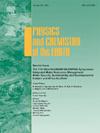评估污染水平和实施生态友好的混合沉淀和超声电凝法处理洗车废水
IF 3
3区 地球科学
Q2 GEOSCIENCES, MULTIDISCIPLINARY
引用次数: 0
摘要
本研究旨在对洗车废水进行评价,并探讨沉淀法和超声电絮凝法(SEC)作为一种混合物化工艺去除化学需氧量(COD)的应用前景。收集不同洗车站的废水,评价其水质,并评价不同操作因素对COD的影响。对洗车站废水样本的理化性质分析表明,平均pH值为7.92,符合EPA的指导方针。然而,电导率(EC),总溶解固体(TDS),总悬浮固体(TSS)和浊度水平超过标准。COD水平接近城市污水,检测到高微生物菌落。每个洗车场平均洗车数量为20辆/天,耗水量为120升。该地区洗车中心日污水产出量为259.2 m3, COD和TSS污染负荷分别为54.06和104.76 kg/年。这些废水被直接送到市政污水收集系统。在7.5 pH, 1.2 cm铝电极间距,25 V电流密度,45 min电解时间下,采用沉淀和SEC混合工艺,COD去除率达到89.57%。研究结果表明,混合工艺显著降低了洗车废水中的COD水平。这种方法在去除污染方面效率很高,大大降低了运营成本,符合全球提高用水效率的努力,有助于实现可持续发展目标6(清洁水和卫生设施)。本文章由计算机程序翻译,如有差异,请以英文原文为准。
Assessing pollution levels and implementing eco-friendly hybrid sedimentation and sono-electrocoagulation for car wash wastewater treatment
This study aimed to evaluate car wash wastewater and explore the potential application of sedimentation and sono-electrocoagulation (SEC) as a hybrid physicochemical process to remove chemical oxygen demand (COD). Wastewater was collected from various car wash stations, its quality was assessed, and the influence of different operational factors on COD reduction was evaluated. Analyzing the physicochemical properties of wastewater samples from car wash stations demonstrates that the average pH value is 7.92, which adheres to EPA guidelines. However, the electrical conductivity (EC), total dissolved solids (TDS), total suspended solids (TSS), and turbidity levels surpass the standards. COD levels are close to municipal wastewater, with high microbial colonies detected. The average number of cars washed in each car wash was 20 units/day, consuming 120 L of water. A daily amount of 259.2 m3 of wastewater is produced at car wash centers in this region, with COD and TSS pollution loads of 54.06 and 104.76 kg/year, respectively. This wastewater is directed to the municipal sewer collection system. The maximum removal of COD was achieved at 89.57 % in a 7.5 pH, 1.2 cm aluminum inter-electrode distance, 25 V of current density, and 45 min of electrolysis time, using sedimentation and SEC as a hybrid process. The results of this study demonstrated that the hybrid process significantly reduces the COD levels in car wash wastewater. This approach exhibits high efficiency in pollution removal and substantially reduces operational costs, aligning with global efforts to increase water-use efficiency and contributing to SDG-6 (Clean Water and Sanitation).
求助全文
通过发布文献求助,成功后即可免费获取论文全文。
去求助
来源期刊

Physics and Chemistry of the Earth
地学-地球科学综合
CiteScore
5.40
自引率
2.70%
发文量
176
审稿时长
31.6 weeks
期刊介绍:
Physics and Chemistry of the Earth is an international interdisciplinary journal for the rapid publication of collections of refereed communications in separate thematic issues, either stemming from scientific meetings, or, especially compiled for the occasion. There is no restriction on the length of articles published in the journal. Physics and Chemistry of the Earth incorporates the separate Parts A, B and C which existed until the end of 2001.
Please note: the Editors are unable to consider submissions that are not invited or linked to a thematic issue. Please do not submit unsolicited papers.
The journal covers the following subject areas:
-Solid Earth and Geodesy:
(geology, geochemistry, tectonophysics, seismology, volcanology, palaeomagnetism and rock magnetism, electromagnetism and potential fields, marine and environmental geosciences as well as geodesy).
-Hydrology, Oceans and Atmosphere:
(hydrology and water resources research, engineering and management, oceanography and oceanic chemistry, shelf, sea, lake and river sciences, meteorology and atmospheric sciences incl. chemistry as well as climatology and glaciology).
-Solar-Terrestrial and Planetary Science:
(solar, heliospheric and solar-planetary sciences, geology, geophysics and atmospheric sciences of planets, satellites and small bodies as well as cosmochemistry and exobiology).
 求助内容:
求助内容: 应助结果提醒方式:
应助结果提醒方式:


